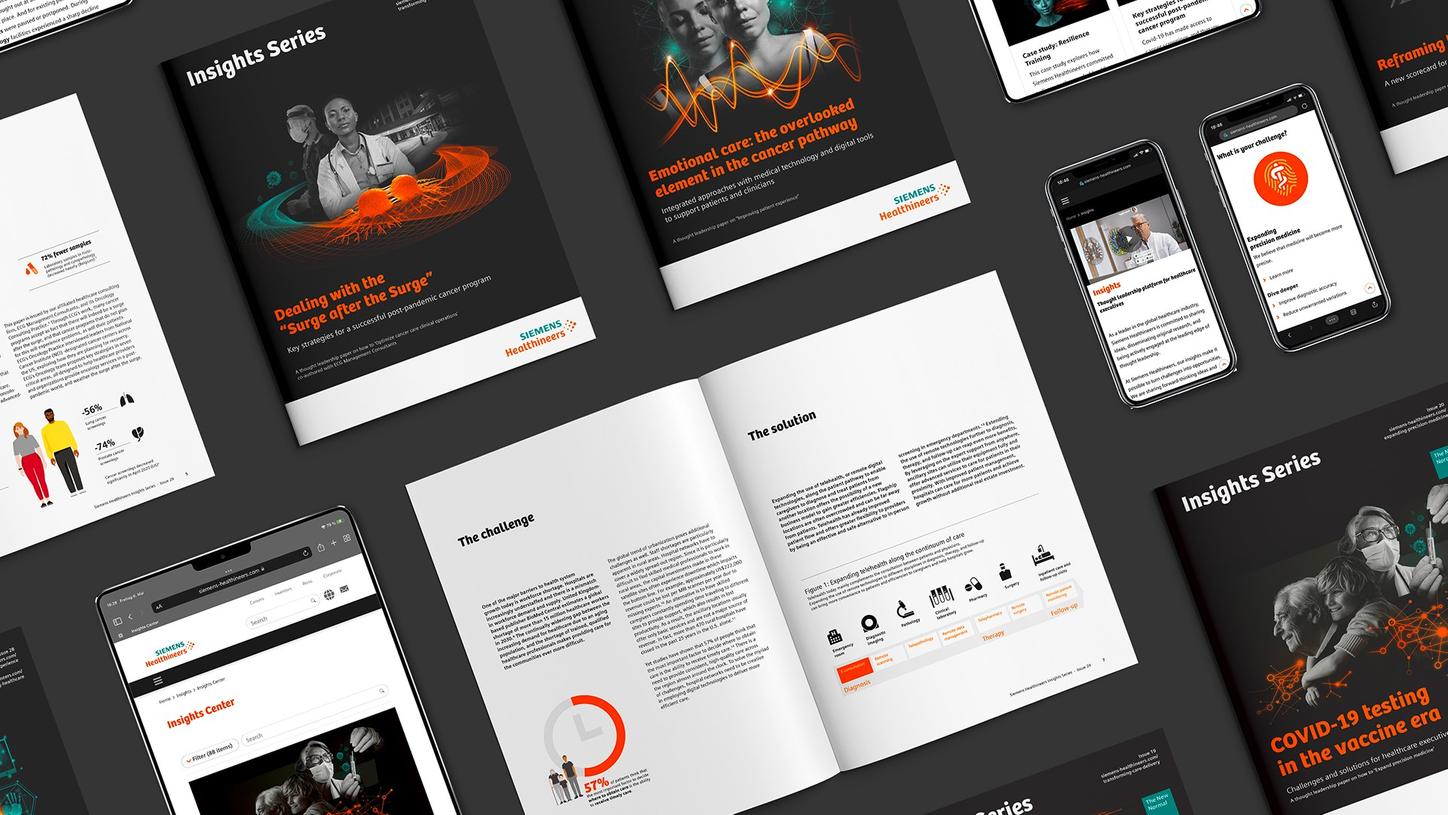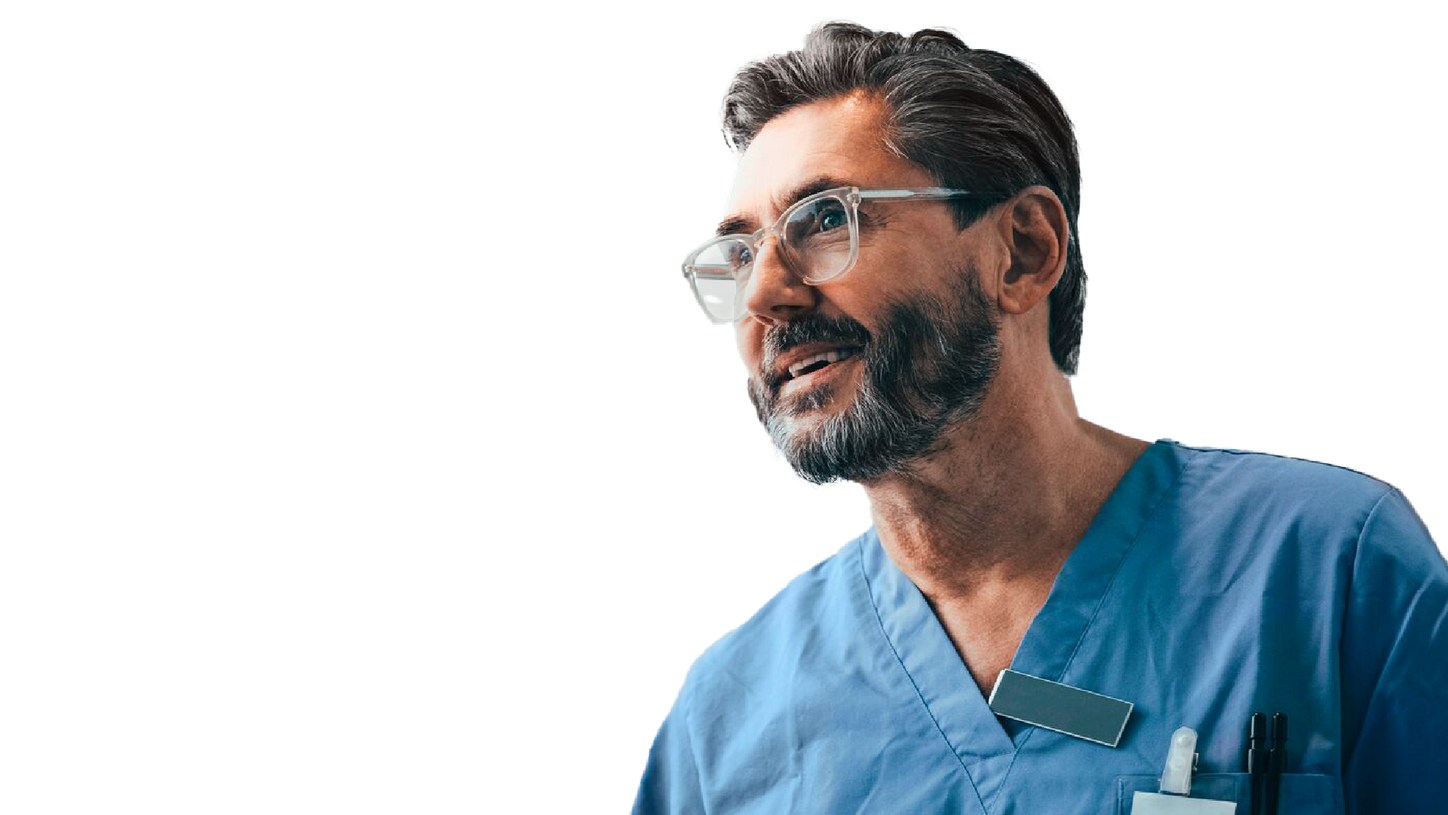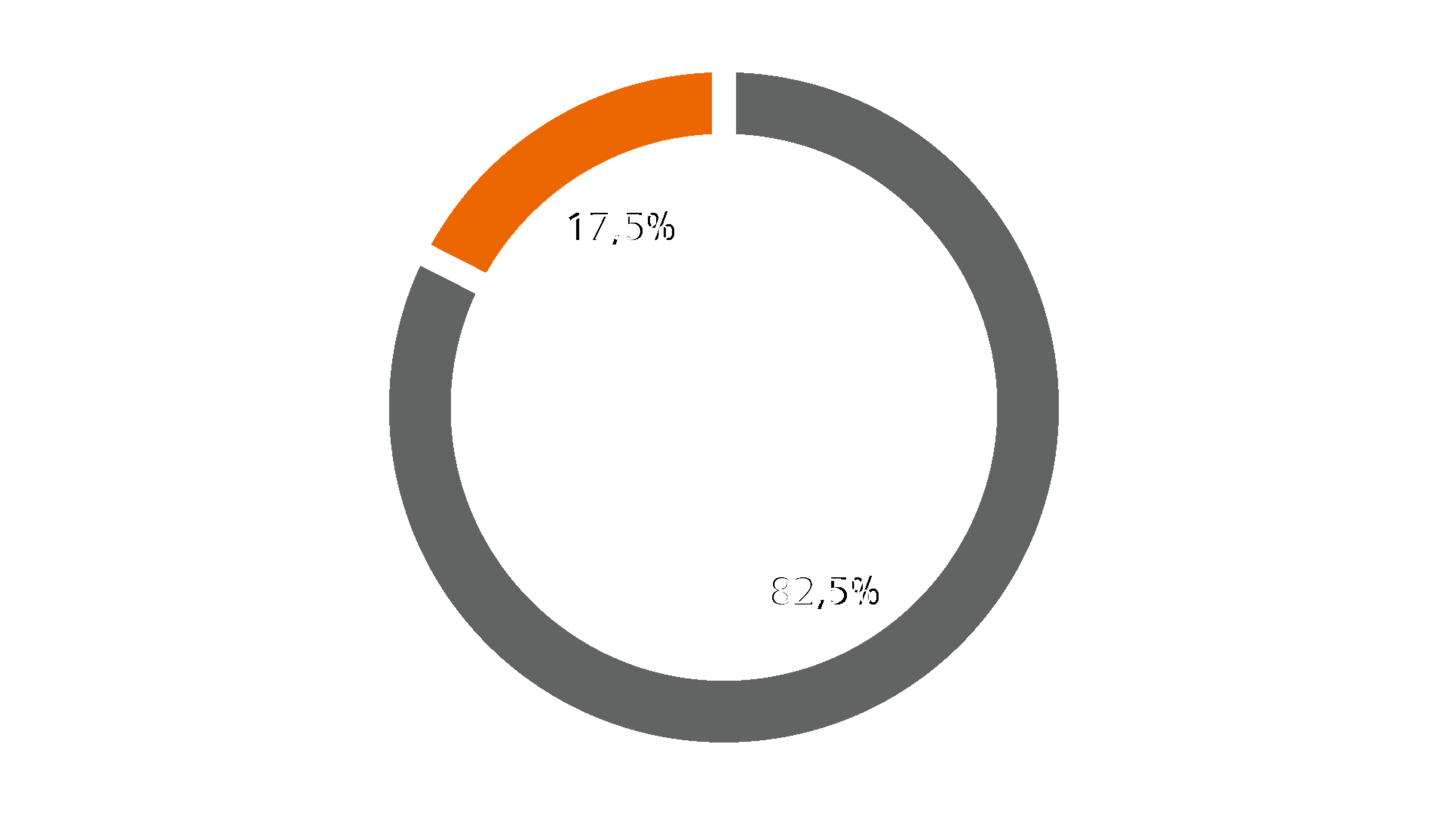Article authors: Justus Krueger, Joanne Grau and Andr├® Steinbuss | Reading time: 8 minutes
This thought leadership publication addresses common misconceptions about sustainable practices in healthcare, debunks myths, and demonstrates how effective resource management and circular healthcare solutions can pave the way for carbon-neutral hospitals.
There is a strong consensus that more sustainable practices are needed in healthcare. The healthcare sector consumes enormous amounts of energy, produces significant emissions, ╠²and generates massive quantities of waste. This costs money but also damages our planet, directly impacting the health of people and communities. Paradoxically, the healthcare sector is a major contributor to the very factors that make people sick.╠²
Yet the healthcare sector has been slow to embrace sustainable practices. While other industries have rapidly adopted renewable energy and implemented more rigorous recycling and waste reduction efforts, healthcare has been more hesitant to change. In many ways, healthcare prioritizes continuity and established protocols. Additionally, a number of widely held beliefs appear to lead many to resist sustainability measures.
In this publication, we evaluate these beliefs: are they based on fact? Or are they simply ŌĆ£mythsŌĆØ?╠²
We also╠²provide examples of how healthcare organizations have taken action and achieved results, demonstrating ways to debunk these myths.

Myth 1: Solar is too risky.
Hospitals cannot switch to renewable energy because it is too unpredictable and unreliable. And besides, it only works in countries with lots of sunshine.
This myth rests on the belief that because hospitals are energyintensive structures and they need to provide their services 24/7, the services they provide are too critical to be left to renewable energy, which is seen as erratic and unpredictable.
Reality
Much renewable energy is generated from natural sources like wind and the sun, which fluctuate. But the reliability of power is not a function of individual generation technologies but of the electricity system as a whole.

Myth 2: ╠ņ├└ė░į║ costs too much money.
Investing in sustainable technology and infrastructure is something we cannot afford in the current economic environment.
The basis of this myth is the financial pressures that healthcare providers are facing. These pressures are very real and cannot be dismissed. Any large-scale investments must be carefully scrutinized. Another dimension of this myth is that investments in things like waste reduction and energy efficiency are discretionary expenses; indulgences that can be undertaken when times are good but not when financial pressures are mounting. Both of these arguments are, however, not supported by data. The focus on short-term cost reduction overlooks a much larger, more compelling picture: sustainability drives long-term economic growth, operational efficiencies, and resilience in the face of global challenges.
Organizations that hesitate to embrace sustainable practices are often left behind by forward-thinking competitors who recognize the long-term cost savings of energy efficiency, waste reduction, and resource optimization.
Reality
According to McKinsey, companies that invest in energy-efficient measures can reduce their energy consumption by up to 30%, resulting in significant cost savings. The initial investment is quickly offset by the cumulative savings on utility bills.3
In addition, adopting circular models can extend product lifetime thus resulting in lower operating costs. Many medical equipment manufacturers offer system upgrade options or refurbishment programs that result in lower capital cost.
Organizations that hesitate to embrace sustainable practices are often left behind by forward-thinking competitors who recognize the long-term cost savings of energy efficiency, waste reduction, and resource optimization.
╠²
According to McKinsey, companies that invest in energy-efficient measures can reduce their energy consumption by up to 30%, resulting in significant cost savings. The initial investment is quickly offset by the cumulative savings on utility bills.3
In addition, adopting circular models can extend product lifetime thus resulting in lower operating costs. Many medical equipment manufacturers offer system upgrade options or refurbishment programs that result in lower capital cost.
╠²

Myth 3: ŌĆ£OffŌĆØ means unprepared.
In our Emergency Department, we never know what to expect. If we turn off imaging systems like CT, we could be unprepared for a crisis.
Hospital emergency departments must, as their name implies, be prepared to respond quickly and effectively to emergencies. Quick decisions and access to the right equipment is essential. With this in mind, energy-intensive equipment such as Computed Tomography (CT) units often remain on or idle in order to be ready for emergency cases that suddenly arrive.
Reality

Myth 4: Disposables are inevitable.
Hospitals need to prevent contamination and therefore cannot reduce the volume of waste consisting of single-use items.
Reality
Hospitals do deal with large amounts of hazardous waste and this must be treated with great care and in accordance with strict protocols. Nonetheless, they can prioritize and separate material designed for recycling. The uncomfortable reality is that the healthcare sector is a very significant producer of waste, a large portion of which consists of single-use plastics.╠²
Plastic is highly effective at preventing cross-contamination. However, only a small fraction of this plastic is recycled. Much of it is incinerated ŌĆō a major source of greenhouse gas (GHG) emissions.
Not all consumables are considered potentially harmful, and for consumables that do not come in contact with patient samples, material designed for recycling can be prioritized.╠²
The incineration of one kilogram of medical waste can result in the emission of approximately three kilograms of carbon dioxide. It has been estimated that a single hospital bed is responsible for the production of more than 13 kilograms of waste per day, of which less than one kilogram is considered infectious waste.8

Myth 5: LEDs mean the job is done.
Switching to LED lights is the best way to save energy on lighting.
Reality
Switching to LED lighting is a highly effective way to reduce power consumption and energy costs; but this is not a substitute for additional, and more effective, next steps. In addition to switching to LEDs, upgrading to Smart LEDs can unlock further savings. The additional energy-saving features include:
- Occupancy sensing:╠²Lights that are left on in unoccupied spaces,such as hospital rooms or lobbies, are a major source of wasted energy. Motion detectors in modern lighting systems address this issue by automatically switching off lights when no activity is detected. Other systems such as ventilation also have such capabilities.
- Daylight harvesting:╠²Photo sensors can measure how muchnatural light enters a space and adjust artificial lighting accordingly. This ensures that rooms receive the right amount of lighting while minimizing unnecessary energy use.
- Time scheduling: Many healthcare properties operate 24/7, butsome areas, particularly at night, run at reduced capacity. Smart lighting automation enables scheduled shutdowns of unnecessary fixtures during these periods, further reducing energy consumption.
Measures such as these make it easier for hospital staff to save energy, as lights are managed automatically, requiring minimal effort.
Cost savings with smart LEDs:

Myth 6: ŌĆ£Pre-ownedŌĆØmeans low quality.
Using refurbished equipment is more environmentally friendly, but the quality is inferior compared to new products.
This widely held belief is a vestige of an outdated view that equates ŌĆ£newŌĆØ with ŌĆ£better.ŌĆØ For many, the allure of fresh, untouched products signals superior performance and longevity. When it comes to pre-owned items, especially those labeled ŌĆ£refurbished,ŌĆØ concerns about their history often cloud judgment. Do the refurbishment processes really lead to high quality? Is it truly as functional as its pristine counterpart? The assumption that pre-owned or refurbished goods are ŌĆ£outdatedŌĆØ or ŌĆ£damagedŌĆØ persists, often leading to the belief that they are inferior. Yet this perception overlooks the quiet ubiquity of refurbished materials in our daily lives. The refurbished smartphone market is expected to more than double by 2032.10 The automotive sector has seen similar trends: in countries like Germany, twice as many consumers prefer pre-owned cars over new models.11 Despite this global shift, pre-owned medical equipment still accounts for less than 5% of the market.
Reality

The path forward
The healthcare sector stands at a crossroads. The myths about renewable energy, financial constraints, and waste management are often not valid excuses for inaction. As these examples illustrate, integrating sustainability into healthcare systems is not only possible but financially beneficial. Hospitals can embrace renewable energy, reduce waste, and invest in smart technologies ŌĆō without compromising patient care or service efficiency.
The examples highlighted in this paper make clear that sustainability and healthcare excellence are not opposing goals. Whether itŌĆÖs through energy-efficient technologies, smart microgrids, or waste reduction initiatives, healthcare organizations can build more resilient and cost-effective systems while significantly lowering their environmental footprint.
The path forward is clear: healthcare must overcome its hesitations and lead the way in sustainable practices. By dispelling myths and embracing innovation, the sector can improve not only the health of the patients it serves but that of the planet.
╠²╠²
This thought leadership publication is part of the Siemens Healthineers Insights Series. It provides ideas and practical solutions on "Resource Preservation". For more Insights, please visit╠²siemens-healthineers.com/insights-series.

Stay tuned with regular executive insights
Subscribe to discover thought-provoking ideas, gain practical solutions to todayŌĆÖs most pressing healthcare challenges, and receive our╠²Insights Series.
More information for healthcare experts
Joint commitment to sustainability
- ecoline - Refurbished. Sustainable. As good as new.
- A valuable partnership: ActGreen Energy Efficiency Services - Consulting service that helps to reduce energy costs
- ╠ņ├└ė░į║ in radiology - Explore diagnostic imaging products to improve energy efficiency
- ╠ņ├└ė░į║ for clinical labs - Solutions for a greener future





